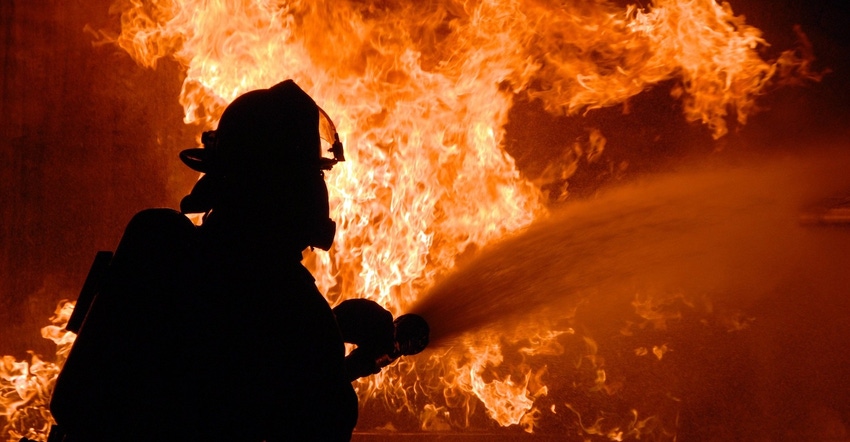Number of Factory Fires Jumped by 129% in 2021
Data gathered by risk management firm Resilinc shows that 59% of the fires in manufacturing facilities were caused by faulty equipment.

A recent report released by risk management solutions firm Resilinc found that the number of fires in factories increased by a whopping 129% between 2020 and 2021 as facility operators grappled with a variety of challenges that emerged during the COVID-19 pandemic. The company posits that the rate of factory fires in 2022 may exceed the high rate of incidents recorded last year.
1,946 notifications on factory fires were distributed through Resilinc’s EventWatch data platform in 2021. A company whitepaper, “Spotlight on Factory Fires,” details that the platform has pushed out 2,889 alerts on factory fires so far in 2022, which the firm said is “on track to have the most factory fires reported in history.”
EventWatch alerts show that factory fires occur most frequently in automotive, manufacturing, and food and beverage factories. Of 15 countries, the United States had the highest number of factory fires in 2021, followed by India and Germany.
“Overwhelmingly the increase was in large part driven by the pandemic’s impacts on factory operations, especially labor and regulatory issues. While lockdowns kept skilled workers at home and distancing precautions forced factories to operate with fewer staff, many factories were also retooling to make new products, such as chemical-based hand sanitizers,” the company wrote in a blog post this week. “The skills deficits and rapid expansion into new products led to gaps in safety protocols, mishandling of chemicals, deferring maintenance on machinery, and other fire hazards.”
The company’s research on 305 factory fires in 2021 indicates that machinery played a role in more than half of the incidents. 59% of factory fires analyzed by Resilinc were found to have been caused by faulty equipment that year.
“Often equipment and machinery are not properly installed, operated, or maintained, which can lead to industrial fires,” Resilinc wrote in the whitepaper. "Companies do not always have proper safety, cleaning, or maintenance procedures for machine[s], or if they do, employees often aren’t sufficiently trained, leaving them unaware of what risks to watch out for and what to do if they find a hazard while working with machinery.”
Some facilities do not proactively replace older equipment, which can also lead to fire risks, the report points out.
Resilinc suggests that factory operators adopt a four-pronged approach to mitigating fire risks in their facilities, including multi-tier mapping, supplier risk assessment, risk monitoring, and collaborating with suppliers to identify and mitigate risks.
About the Author(s)
You May Also Like




